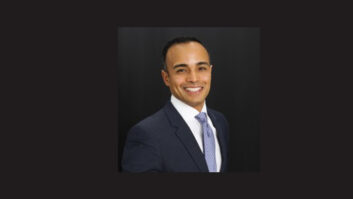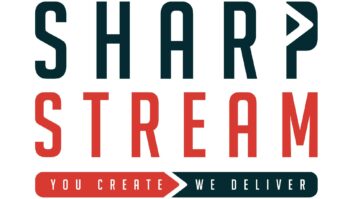
LONDON — Despite occasional comments to the contrary, figures from advanced media markets, such as the United Kingdom, point to the increasing popularity of radio due to its well-known attributes — universality, mobility and intimacy.
Terrestrial broadcast delivery is the only free-to-air and cost-effective method for truly mobile reception, especially in cars. In AM, shortwave in particular, it is also free from economic or political gatekeepers. Radio remains the best medium for live relaying of news and information.
Notwithstanding the various degrees of success of the three major standards (DRM, DAB/DAB+ and HD Radio), the only way forward for audio broadcasting can be digital.
Major advances
Involved as I am with Digital Radio Mondiale, I often hear that “digitizing radio is not an imperative,” that “there is no new compelling business model” and also that “there are not enough receivers.” An undeniable argument is that analog FM works very well. After decades of constant improvement, the medium is truly widespread and the receivers are plentiful and cheap.
But ever-popular FM is becoming constrained by an increasing lack of available spectrum. FM is also energy-hungry and quite limited in its coverage. If one cannot renew FM, eventually its popularity (and the advertising revenue coming with it) will tail off.
So give digital radio in the FM band a chance. And do not abandon AM broadcasting bands in the process, either. This is certainly nothing like the old AM — instead, DRM offers a new digital listening experience featuring excellent sound quality, together with several added value options, including joint stereo and informative data streams.
DRM as a digital standard offers uniformly clear sound in all bands, AM and VHF. While traditional analog shortwave and medium-wave transmissions lost attractivity in well-developed areas of Europe and North America, many countries in Asia did not reduce their services. India, China, South Korea, Malaysia, Australia, Taiwan and Japan have replaced part of their infrastructure in the past 10 years and continue to do so.
In India there is already a huge 1 MW transmitter on air with analog and DRM medium-wave transmissions. Twenty low-power and another 27 higher-power medium-wave transmitters are going to be delivered and on air in the next year or so, and the receiver manufacturers are taking note. Digital radio means excellent signal quality with new features, like additional data services with electronic newspapers, images and low-bit video streams, as demonstrated by DRM already.
Not just one standard
Digital radio is opening the door for improved or completely new broadcasting applications: multichannel operation, bilingual educational programs and preventive warning or emergency services.
This is not the radio of old, but one that sits right at the heart of a connected new media space. This space appears a certain way in Washington or London and totally different in Khartoum or Dhaka.
As we were recently reminded (by Oldrich Cip of the HFCC) during World Radio Day, 3 billion people — 50 percent of the world population — live below the line of poverty on less than US$2.50 per day. Their first choice for a communication device is a mobile telephone, a radio or both. For most, listening to a local channel, a community station or an international broadcast is still more affordable than a computer, a television or other electronic devices.
According to recent studies carried out by All India Radio, in India, radio is still the undisputed leader among the various means of communication with 99.19 percent of the population having access to it. This is due to the fast-growing mobile market reaching around 600 million mobiles, the increasing popularity of cars and, to some extent, the access to news only available on public radio stations.
The conclusions and challenges are therefore obvious: Mobiles and radio go hand in hand; cars need radios, and radio will grow with the upsurge of in-car ownership in the developing world; only good or unique content will sell receivers and make digital radio a reality.
For all three of the above-mentioned issues, digital radio needs to deliver fully. Digital audio in mobiles or even tablets is not an unqualified success. Neither is it in cars, however, we were quite excited to recently listen to “live” in-car DRM transmissions in New Delhi, using an NXP multistandard chip. Though not the only one of its kind, it demonstrated the way forward as regards the development of a global digital receiver.
Content
The emerging multimedia landscape suits digital audio broadcasting, though some of the longstanding tasks of planning, resourcing and regulating are still quite significant.
In a well-functioning and integrated media world, various platforms and standards will only be successful if they accept the differences and the overlaps, and coexist. It is simplistic to believe that there is one answer to satisfy all needs, all regulators and all listeners. Even a global receiver needs to be compatible for a standard or a combination of standards used in a particular market.
It is interesting that in Europe, where DAB/DAB+ is supported as the major standard, some smaller community and commercial stations also want to see if the DRM+ can complement DAB+. Positive results have derived from tests in the U.K., Italy, France, Germany and more trials are scheduled to take place in Norway and France soon.
Now that the digitization of TV is well underway, many countries are now finally switching their attention to radio and to the choice of the digital standard. In our (DRM) experience, the hardest part of the process is not the choice of the standard, protracted as it seems in some countries such as those in Latin America.
At the end of the day, it is not about technology but about good content, the will to succeed and the budgets to support digital implementation on multistandard receivers or platforms coveted by eager listeners. This is easier said than done.
Ruxandra Obreja is Digital Radio Mondiale Consortium chair. Contact her via email at:[email protected].












